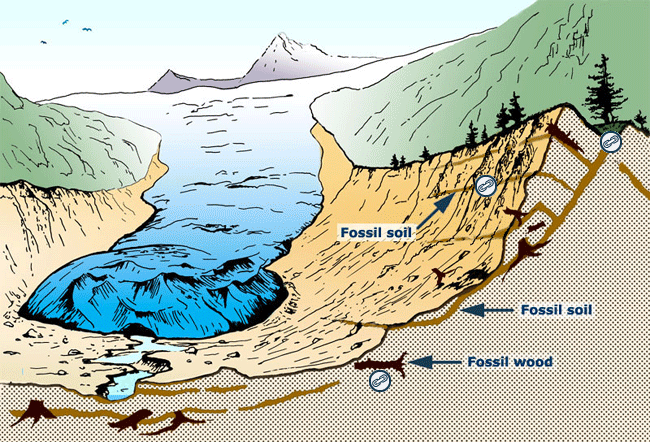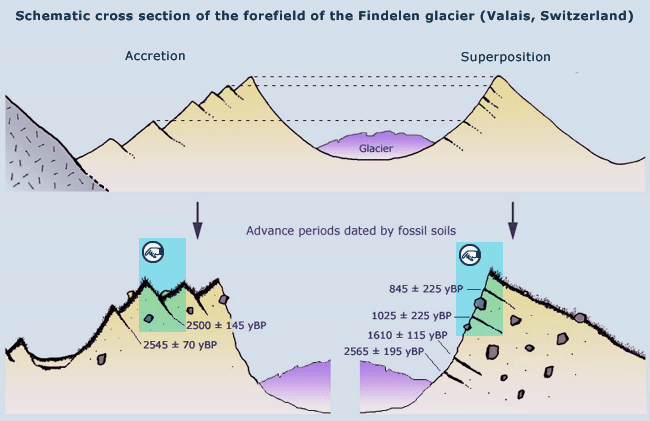 |
|
|
|
|
|
| Glaciomorphological methods (entire Holocene) are used in the forefield where fossil soils and fossil trees may be found that were covered or uprooted when the glacier advanced. The age of organic fossil remains can be determined using radiocarbon dating. The growth rings of fossil trees can also be examined (dendrochronology)and the trees can be dated to the nearest year in some cases. |
|
1 - A typical glacier forefield with lateral moraines on
both sides. In the forefileld one can find fossil trees and fossil soils
as evidence of former glacier advance periods. Drawing by H.Holzhauser. |
| |
|
|
2 - This schematic cross section through the forefield of
the Findelen glacier (Valais, Switzerland) shows both moraines built up
by accretion and moraines built up by superposition. Some of the fossil
soils has been radiocarbon dated.(Figure from F. Röthlisberger 1976). |
|
| Left - Between two moraine ridges e.g. from an accretion you can dig to find a fossil soil. The organic remainders can be dated with the radiocarbon method. Click on the icon see an example of such a soil. | Right
- In this moraine profile several fossil soils are covered by moraine material
which was deposited during different glacier advances. From the bottom to
the top the age of the soils decrease. Click on the icon to see examples
of such soils. |
| |
||
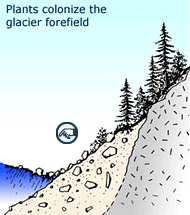 |
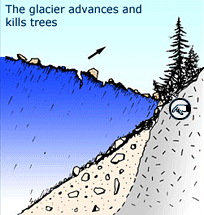 |
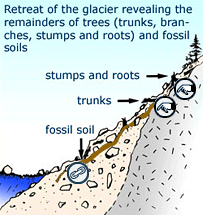 |
| 3 - This schematic cross-section through a part of a glacier forefield shows how a glacier's advance kills trees and how remainders of trees appear during a retreat period of the glacier |
||
29 August 2011 |
||
| |
||
